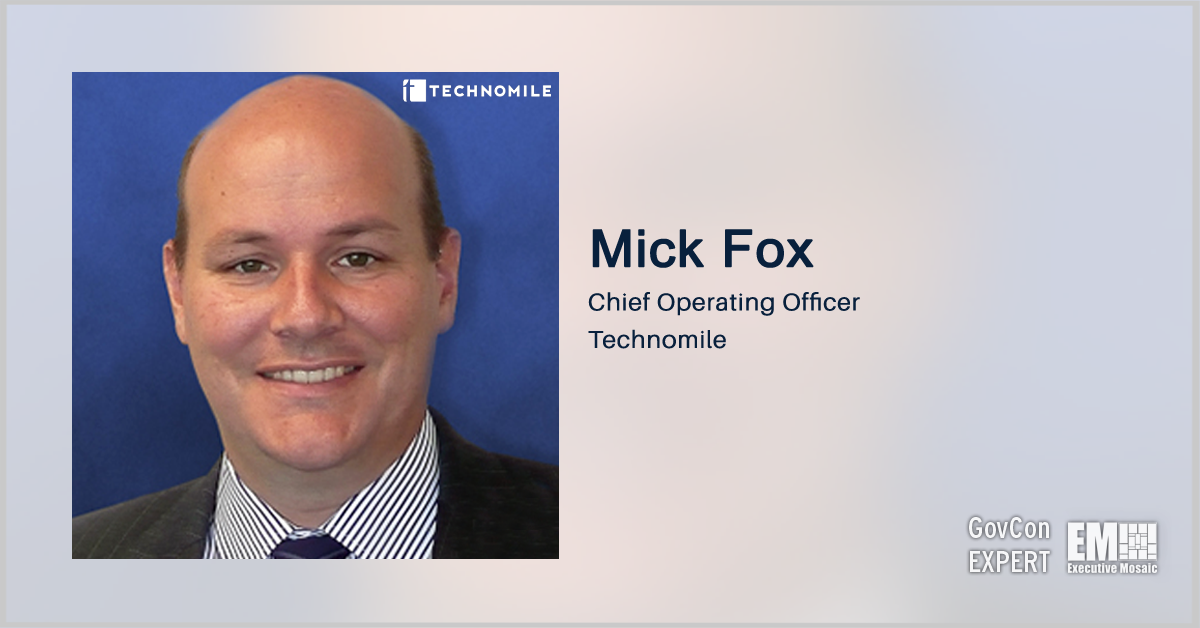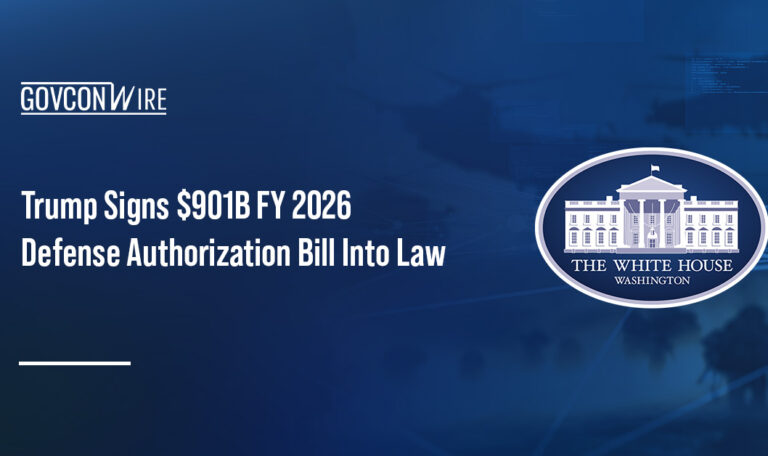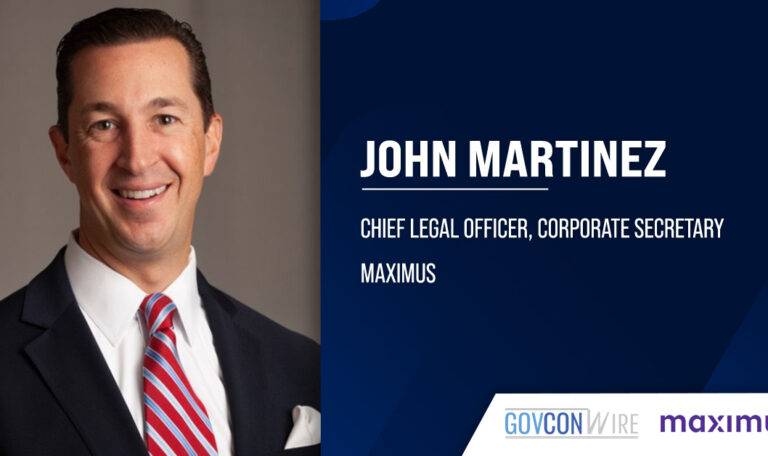Mick Fox, chief operating officer for Technomile, has provided his latest feature as a member of Executive Mosaic’s GovCon Expert program on Thursday.
Previously, GovCon Expert Mick Fox has shared his insights with a two-part informative guide breaking down contract lifecycle management (CLM) in the federal landscape today.
In today’s piece, Fox discussed the benefits of contract management discipline for an organization as well as the importance of maturity models in government contracting and the hurdles adapting to new CLM platform capabilities.
Visit GovConWire.com to read the latest features on our industry from the most significant executives of consequence in the GovCon industry and federal sector. Become a GovCon Expert today!
“Maturity models are useful tools that can help companies assess the current state of their contract management program – that is, the processes, technologies, and strategies being employed to manage their organization’s portfolio of contracts – as well as identify the critical next steps needed to improve.”
You can read Mick Fox’s next GovCon Expert article below:
Taking Federal Contract Management to the Next Level
By Mick Fox
It’s well proven that improving your organization’s contract management discipline delivers a myriad of benefits: more effective risk and compliance management, greater contract profitability, improved delivery to customers, and more cost-effective contract administration. For example:
- “Good contract development and management could improve profitability by the equivalent of massive 9% of annual revenue.” – World Commerce & Contracting research
- “Administrative costs associated with contracts are reduced by 25%-30% through implementing automation.” – Aberdeen research
As a result, many organizations are making it a priority to invest in sharpening their contracting capability. In fact, a recent survey of World Commerce & Contracting membership revealed that 81% have plans to implement contract automation. But where to start if you’re a federal contractor looking to drive improvement in this area of your business?
Maturity models are useful tools that can help companies assess the current state of their contract management program – that is, the processes, technologies, and strategies being employed to manage their organization’s portfolio of contracts – as well as identify the critical next steps needed to improve. Organizations move through the model’s continuum as they become more and more mature in their implementation and management of their contract management program and realize increasing business value.
All that said, a key drawback to most existing contract lifecycle management – or CLM – maturity models is they approach maturity through the lens of commercial agreement management, rather than addressing the unique requirements associated with the management of federal contracts. Few industries are as regulated as the US government contracting world and this is reflected in the complexities of managing federal contracts! In addition, existing CLM maturity models tend to focus on the contract management needs of legal, sales, or procurement departments, rather than the needs of contracts professionals working in the Aerospace & Defense or GovCon industries.
So, let’s frame up a CLM maturity model through the eyes of a federal contractor and explore, at a high level, some of the key characteristics observed as organizations progress along the continuum of federal contract management maturity.
The Federal Contract Management Maturity Model
Level 1 – Ad Hoc
The initial Ad Hoc stage of federal contract management maturity is characterized by decentralized, inconsistent data and manual, often poorly defined processes, which result in lower productivity and longer cycle times. Contracts and related files are stored locally, in emails, or on shared drives. Contracts professionals often rely on spreadsheets to track key information related to each federal contract, making finding contract details and piecing together reports highly cumbersome. Data inconsistencies and inaccuracies are a common challenge.
As a consequence of manual processes and disparate data, organizations at the Ad Hoc level of maturity face extremely limited visibility into individual contract details as well as across their holistic portfolio, significantly heightening their risk. Contract administration costs are high and it’s particularly costly to respond to data calls and produce critical, often mandatory reporting.
Level 2 – Foundational
At the Foundational stage of maturity, a company has achieved visibility across its portfolio of federal contracts and successfully automated basic contract administration and compliance actions. The organization has invested in CLM technology, creating a single, centralized repository to house all government contracts. Systematic validations are in place to ensure that critical contract details – such as key clauses, CLIN/SLINs, CDRLs/deliverables, related mods and subcontracts – are consistently captured and can be used to drive tasks and notifications to strengthen compliance.
Notably, a clause library containing FAR, DFARS, and agency-specific clauses is in place within the CLM (and ideally connected to acquisition.gov for ease of maintenance!), enabling clause tracking and designation of mandatory and flow-down clauses, so you know exactly where risky clauses exist and flow downs to subcontracts and/or mods are automatically enforced. In addition, workflows are defined and documents are templated to support key processes – OCI vetting, limitation of funds, contract briefs, CPARS responses, and contract close out, to name a few – introducing standardization and automation that strengthens risk and compliance management.
At this stage, global search, along with basic reporting and analysis are fully enabled. Companies enjoy real-time visibility across their portfolio of federal contracts and related subcontracts, eliminating hidden risk, enabling efficient reporting and responses to data calls, and improving audit-readiness.
Level 3 – Advanced
The Advanced level of maturity is characterized by broader and more sophisticated process standardization and automation, as well as system integrations. Companies at this level introduce NLP/ML/AI-driven technologies to intelligently automate the ingestion of standard solicitation, award, and modification forms and documents to speed the capture of contract details, clauses, and required compliance tasks and deliverables within the CLM. Beyond the benefit of reduced administrative costs, this enables rapid contract analysis and easy identification of changes to clause language that may heighten business risk.
Organizations at this level also extend the usage of their CLM platform beyond federal contracts to streamline their management of commercial agreements, templatizing and automating agreement creation, digitizing review and approval workflows, and employing e-signatures for execution. Managing both sell-side and buy-side obligations on a single platform enables more effective management of risk and compliance as these companies establish partner and subcontractor agreements and seamlessly flow down clauses.
At the Advanced stage, a robust integration framework that seamlessly connects the CLM with back-office systems (e.g., ERP, procurement, project management, HRMS) is also typical, enabling organizations to achieve the coveted “single source of truth,” where contracts professionals and key stakeholders across the organization can rely on the CLM as their one-stop-shop for a comprehensive view of compliance, risk, financial, and performance details for each contract, as well as insight into the people, processes, and tools that drive contract profitability.
Level 4 – Future-Enabling
As its name suggests, the focus of government contract management when an organization reaches the Future-Enabling level is on putting data regarding contracts and their performance to work for you to guide strategic decision making and continuous improvement – in the context of both post-award activities and your pre-award business development and capture efforts. The data leveraged includes your own historical contract data – e.g., regarding contract execution, performance ratings and evaluations, risks, profitability, fulfillment, delivery, subcontractors, negotiation cycles for partner and subcontract agreements, etc. – as well as publicly available data from sources like USASpending and FPDS
Application of ML/AI to both internal and public contract data enables organizations at this level of maturity to predict performance and benchmark against competitors and/or their overall market, enabling more proactive risk mitigation, better go/no go decisions on new pursuits, smarter teaming strategies and subcontracting, improved terms and negotiation cycles for commercial agreements, and, ultimately, superior profitability and sustained growth.
Crawl, Walk, Run
As you can see, the familiar “crawl, walk, run” adage certainly applies to advancing your federal contract management processes. Whether your organization has just begun to explore CLM technology, or has already invested in a CLM system, the Federal Contract Management Maturity Model is a useful tool to benchmark where your organization stands today and gain guidance and inspiration for continuing to mature your own program. In my forthcoming series of articles on this topic, we’ll take a deep dive into each stage of the model, as well as consider the practical next steps an organization should be taking to progress to the next level of federal contract management maturity and realize an increasing level of value from investment in CLM software.
About GovCon Expert Mick Fox
Creating better companies through innovative and aggressive thoughts, and value added technologies. That has been my 25 year career. Every company I’ve started or have joined, I have tackled our challenges using these two core capabilities which I bring to the team. In the end, they all required the same leadership skill set that I bring: establish a well researched and thought out strategy, be willing to change the company, desire to innovate, the need to be aggressive, and the implementation of new technologies, or the delivery of technology.















